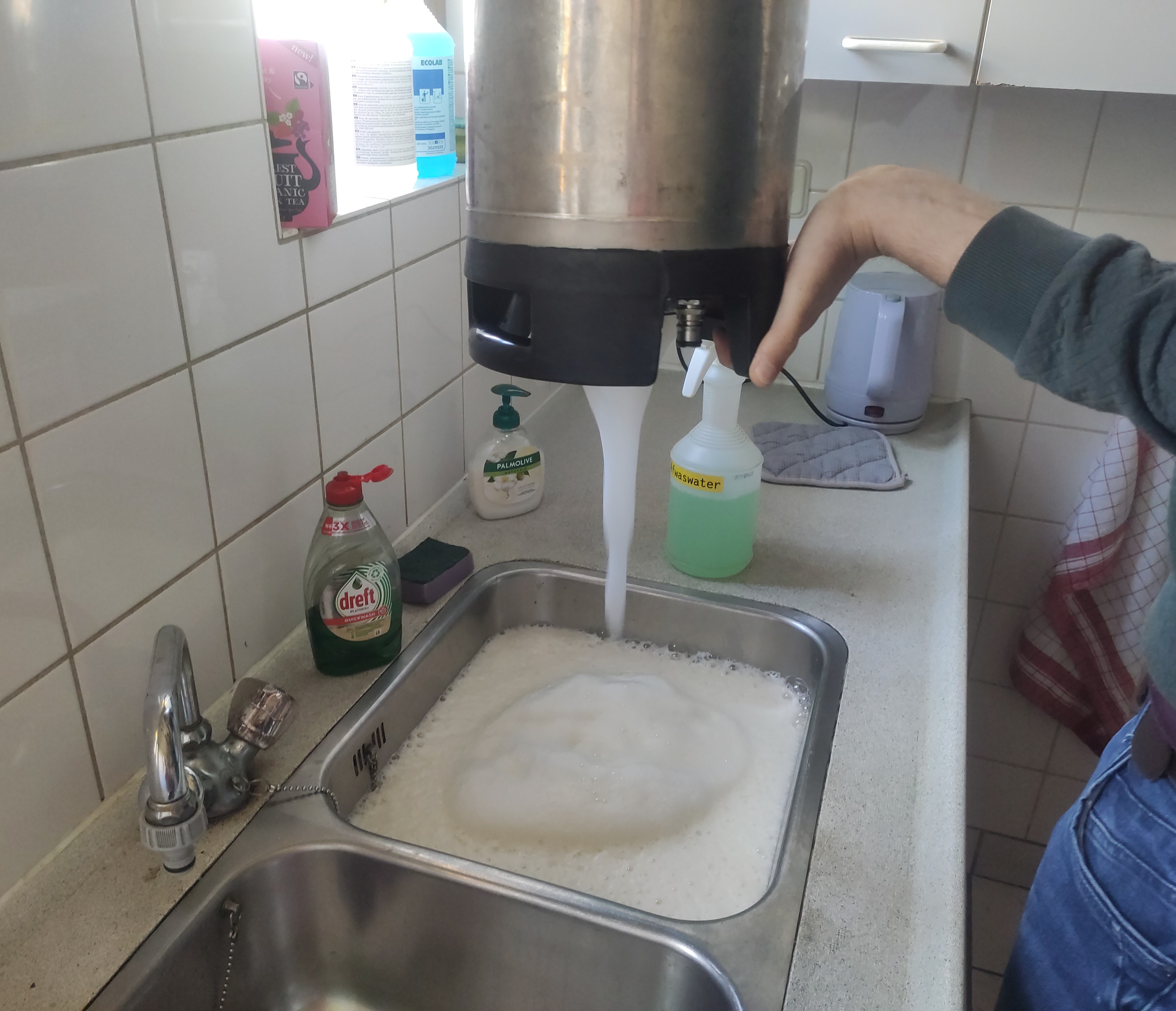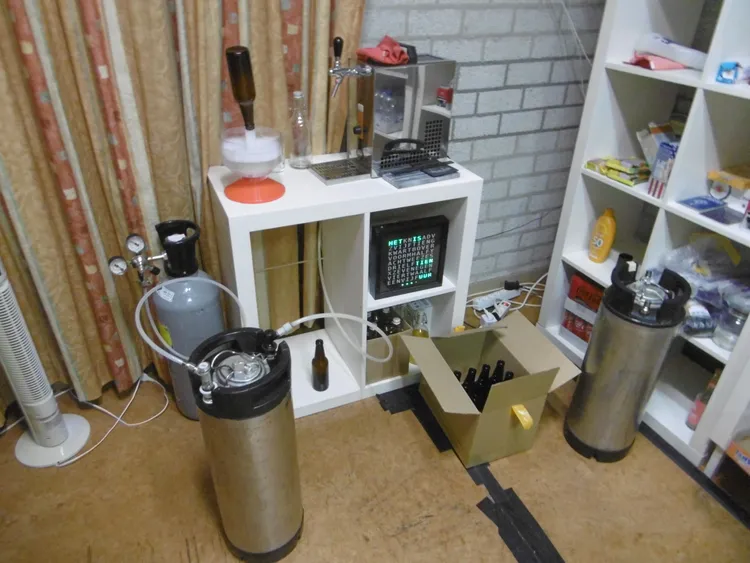HolyMate in bottles
I have written about HolyMate before in a number of previous blogposts. This article is about the same recipe, just handled differently.
As you might know, I have made a lot of HolyMate at Hackalot already, more than 350 litres. But as the ‘shininess’ of the drink faded away, so did the demand. This created a small problem for us, since the drink started to spoil before all of it was consumed. We used to make HolyMate in batches of 18L, divided into two soda-kegs of 9L each. To serve holymate, it was connected to a beer tap while being pressurised by CO2. The problem with this setup, is that while it is connected, it is not fully sterile, and slightly exposed to the outside world. And after two weeks of being connected, yeast and other unpleasant infections (vinegar) start taking over. Resulting in waste, which is undesirable in every way. The photo below shows us disposing of some spoiled HolyMate.


We had discovered by accident that HolyMate in a bottle was preserved for much longer than while it was connected to the tap. This is why we started an experiment, which would tell us for how much longer HolyMate was preserved in a bottle. The experiment was very simple, just dispense HolyMate into bottles directly after connecting it in the usual way, and test it periodically. This method is far from perfect but it does give an indication. The bottles used in this experiment can be seen below.


The results of this experiment were somehow worse than our accidental discovery, but did prove us that even this simple setup could preserve the HolyMate for 2 months (unrefrigerated). Which is much better than a few weeks. Especially when compared to the two days of activity at Hackalot each week. Combine the benefit of making it easier to share HolyMate outside of Hackalot (eg. friends, other hackerspaces) with the longer shelf-life and it’s worth a few attempts. There has already been some HolyMate at hack42.
The problem with bottles is that you need to collect them, and clean them for re-use. This is a time consuming process wich to which the fun wears off fairly quickly. However we discovered that the dutch BNR bottle (=Bruine Nederlandse retour fles) is available for craft brewers and has a deposit of 0,10 euro per bottle. This means that if we ever get tired of the bottles, we can dispose of them at any supermarket. While these bottles are much cheaper than any other bottle, at the scale we are using them they still cost 0,50 euro cents per bottle, deposit included. The price goes down to 0,37 euros per bottle at scale, deposit included. This unfortunately raises the break-even point for HolyMate, but it is worth it if it prevents the HolyMate from spoiling. So we created a small bottling setup using these bottles, which can be seen below. We bottled 48 bottles in total (0,30cl * 48 = 14.4 litre). All bottles were rinsed with SAN before bottling.






With the bottles providing their benefits, there is still another bottleneck (pun intended) in the production process, which is filtering. The yerba mate is very ‘dusty’, and the dust (polvo) is very fine. The dust tastes horrible, and must be filtered, but it unfortunately clogs coffee-filters very fast and manages to pass through very fine mesh. Which is why we attempted to use kiesesol to let gravity do the work for us, and then to siphon the dust-clear top layer. This unfortunately didn’t work as well as we hoped it would. The image below shows a pump seperating the HolyMate with kiesesol after resting for a few days. In the next months, we’ll be running experiments to improve the filtering step of the production. When all of that is setup correctly, I will try to get back to working on the MES side-project.

